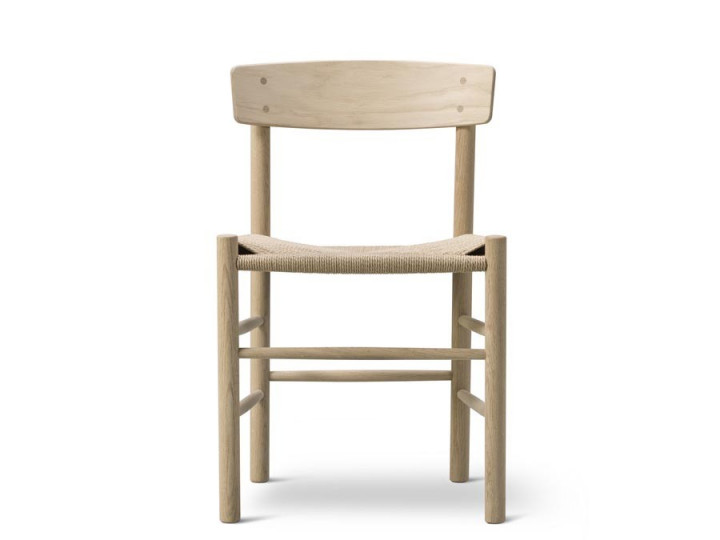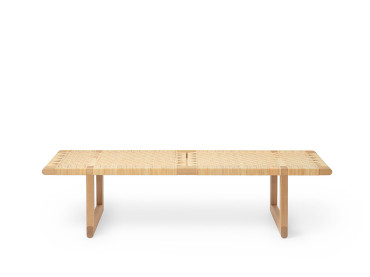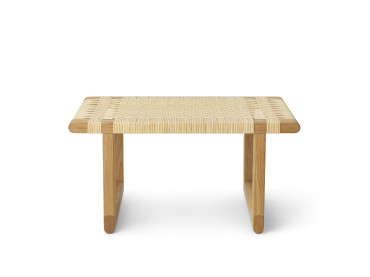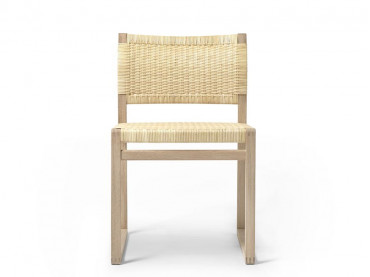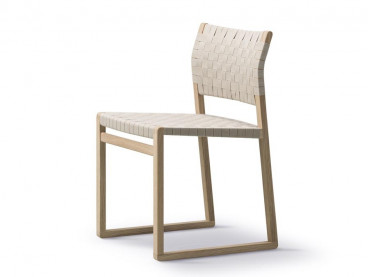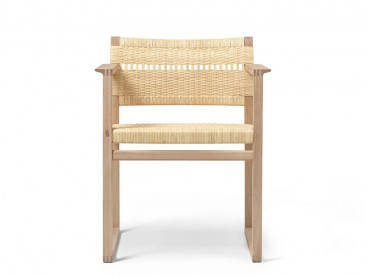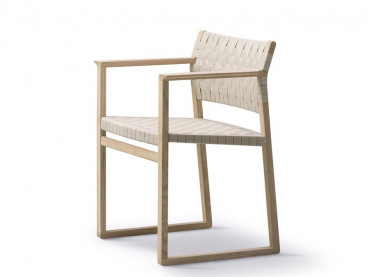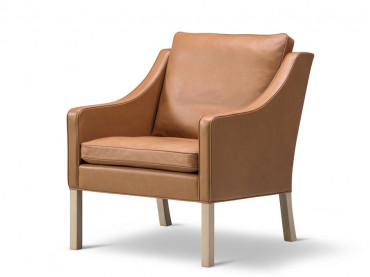Shaker Dining Chair model J39 by Borge Mogensen, New edition.
-
Børge Mogensen
-
Fredericia
- FRED034 On demand. Delivery time 8-10 weeks
Shaker Dining Chair model J39 by Borge Mogensen, New edition. *Required step
In order to help you to choose, and to receive samples, do not hesitate to contact us by email: contact@galerie-mobler.com or by phone: 01 43 33 20 12
Shaker Dining Chair Model J39 by Borge Mogensen, New edition.
She is still in production in the Fredericia Furniture workshops.
In 1939, when 28 year old architect Børge Mogensen started his career he pursued the vision to create high quality functional furniture with a reasonable price tag that could make the ideas of simple modernism popular among the people.
Mogensen decided that the furniture should all be based on established cabinet-maker’s principles found in traditional furniture types from around the world, while at the same time being adapted for ease of local production without compromising on quality.
Børge Mogensen then invited his friend Hans J. Wegner to participate in this venture, which came to lay the basic foundation for the development of the concept “Danish Modern” in the 1950’s. A few pieces from the programme became so accomplished that they have been in continuous production ever since their launch in the 1940’s. Fredericia’s special relationship with Børge Mogensen have ensured that these models will always be a part of Fredericia’s ‘The People’s Collection’.
Both Mogensen and Wegner’s furniture for “The People’s Collection” was based on an evolutionary design approach. Wegner’s rocker was inspired by traditional Windsor furniture, whereas Mogensen’s J39 was an evolution of methodology taken from Mediterranean region folk furniture. The C18 table was inspired by the functional style of the American Shaker culture. The durable and sturdy, yet refined quality of “The People’s Collection” makes the furniture suitable for both private and public use. And to this day, both new and vintage versions of the furniture can be seen in public institutions, universities, cafés, restaurants and private homes in Denmark as well as throughout the world.
| Year | 1947 |
| Dimensions | H : 77 cm. W: 48 cm. P : 43 cm. Seat height : 46 cm. |
| Material | Oak, paper cord |
| Style | Classique Neuf |
| Origin | Denmark |
| Fournisseur | Fredericia |
Børge Mogensen
Denmark (1914-1972)
Mogensen was one of the most important among a generation of furniture designers who made the concept of "Danish design" known throughout the world. Together with colleagues such as Arne Jacobsen and Hans Wegner, Mogensen created international respect for Danish furniture design, and his simple and functional designs have for more than half a century enjoyed worldwide demand.
He trained at the School of Arts and crafts and at the Furniture School of the Royal Danish Academy of Fine Arts (1936-42). Between 1942 and 1950, he was head of FDB´s furniture design studio, but left to found his own design studio in 1950.
During his time with Kaare Klint, Mogensen fostered a deep commitment to producing classical, simple and highly functional furniture. He also became interested in researching contemporary lifestyles, in order to develop domestic objects that are customized for specific uses. Continuing Klint's innovative studies in how the size and proportion of objects should influence their design, Mogensen, collaborating with Grethe Meyer, produced a project in 1954 called the Boligens Byggeskabe (Construction Cupboards of the House), which introduced the idea of building shelving and storage units as part of a room, rather than purchasing and placing them in the space. Mogensen did studies to determine the standard measures for common objects, such as cutlery and shirts, and how many of each item the average person owned. With this information he developed a set of figures for the base width and depth of drawers and shelves, and his information tables were published as a manual on building storage systems.
Between 1955 and 1967 he worked on the related "Øresund" shelving series that took on the mammoth task of solving every storage need that could arise in the modern home. By the end of the decade Mogensen had re-embraced a more straightforward functionalism, a redesigned "Spanish" chair in 1959 was praised for its elegance and materials. Mogensen also collaborated extensively with weaver Lis Ahlmann on textile designs, and after Klint's death in 1954, succeeded him as designer to the Danish Museum of Decorative Art.

